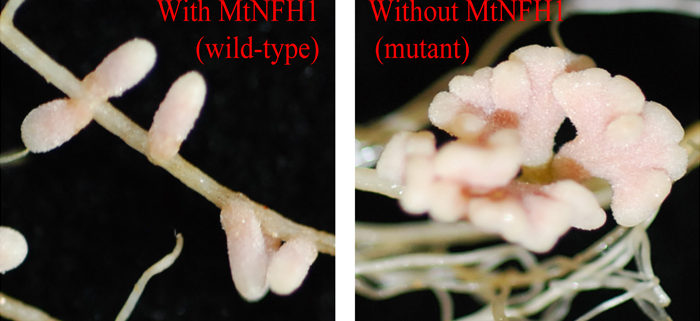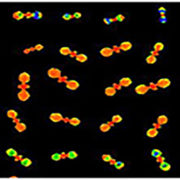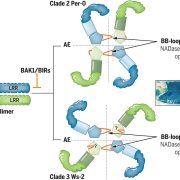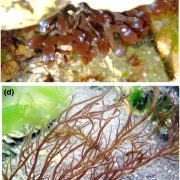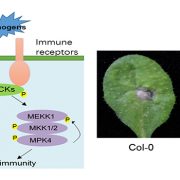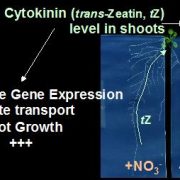Nodule Symbiosis: Cleavage of Bacterial Signals Affects Nodule Shape
Cai et al. investigate the function of a Medicago truncatula enzyme (MtNFH1) that cleaves nodulation signals of symbiotic Sinorhizobium meliloti bacteria. Plant Cell (2018). https://doi.org/10.1105/tpc.17.00420.
By Jie Cai, Zhi-Ping Xie and Christian Staehelin
Background: Nitrogen-fixing rhizobia are symbiotic bacteria that convert atmospheric nitrogen gas into ammonia in root nodules of legumes. The fixed nitrogen is provided to the host plant in exchange for photosynthesis products and nutrients. Rhizobia typically enter young legume roots via infection of root-hairs. Establishment of symbiosis depends on rhizobial nodulation signals, the so-called Nod factors (chitin oligosaccharides modified with a fatty acid chain). Legumes possess chitinases (chitin cleaving enzymes) or related hydrolases that can cleave Nod factors. In this way, the host plant controls Nod factor levels at the symbiotic interface.
Question: We have previously identified MtNFH1, a Nod factor hydrolase of the legume Medicago truncatula. This enzyme lacks chitinase activity but efficiently cleaves Nod factors produced by Sinorhizobium meliloti. We wanted to know if MtNFH1 plays a role in the nodule symbiosis.
Findings: We have identified and characterized M. truncatula mutant plants that do not produce MtNFH1. When inoculated with S. meliloti, the mutant plants showed delayed root-hair infection as compared to wild-type plants. Hence, MtNFH1 possesses a symbiosis-promoting role at the stage of bacterial entry into roots. Surprisingly, the MtNFH1-deficient plants formed nodules that were different from wild-type nodules. Nodules of mutant plants were bigger and frequently clustered together. Remarkably, young nodules of mutant plants showed abnormal nodule branching (see photo). Such nodule branching was also observed for wild-type plants inoculated by a Nod factor overproducing S. meliloti strain. In conclusion, our data indicate that Nod factor hydrolysis plays an important role in the fine-tuning of the symbiosis at the stage of root-hair infection and in nitrogen-fixing nodules.
Next step: Our findings suggest a role of Nod factors in nodule branching. Apart from MtNFH1, which genes are involved in this process? Do Nod factor levels in nodules influence processes regulated by plant hormones?
Cai, J., Zhang, L.Y., Liu, W., Tian, Y., Xiong, J.S., Wang, Y.H., Li, R.J., Li, H.M., Wen, J.Q., Mysore, K.S., Boller, T., Xie, Z.P., and Staehelin, C. (2018) Role of the Nod factor hydrolase MtNFH1 in regulating Nod factor levels during rhizobial infection and in mature nodules of Medicago truncatula. The Plant Cell. https://doi.org/10.1105/tpc.17.00420.
Keywords: Nodule symbiosis, Nod factors, Nod factor hydrolase, Nodule branching


